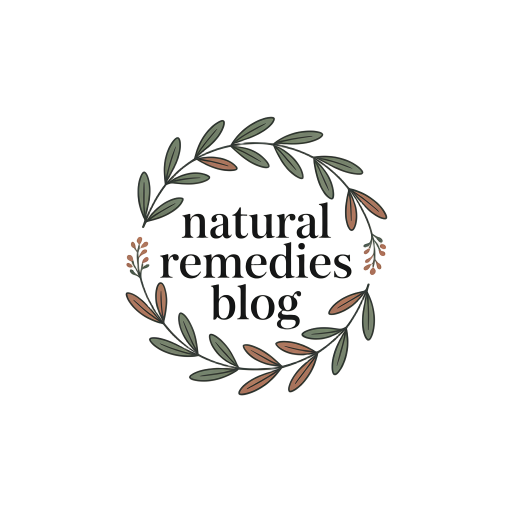7 Allergy Relief Remedies You’ll Want to Save for Spring
As golden pollen drifts through the spring air, you’ll notice your first sneeze signaling the start of allergy season. While over-the-counter medications offer temporary relief, natural remedies can provide sustained comfort without unwanted side effects. From powerful plant compounds like quercetin to strategic home modifications, you’ll find an array of evidence-based solutions that target seasonal allergies at their source. Let’s explore the most effective natural interventions that can transform your springtime experience.
Natural Supplements That Combat Seasonal Allergies
While prescription medications remain a common treatment for seasonal allergies, several natural supplements have shown promising results in clinical studies.
Among effective allergy remedies, quercetin acts as a natural antihistamine, reducing inflammation and allergic responses.
You’ll find butterbur can be as effective as some antihistamine medications for relieving nasal symptoms.
Stinging nettle helps block histamine production, while vitamin C strengthens your immune system and reduces histamine levels.
Spirulina shows promise in decreasing nasal congestion and inflammation.
For best results, you’ll want to start taking these supplements a few weeks before allergy season begins, as studies indicate that natural compounds can significantly reduce allergic responses.
Essential Oils for Respiratory Relief
Several essential oils offer natural relief from respiratory symptoms associated with seasonal allergies. Peppermint oil contains menthol, which helps clear nasal passages and ease breathing difficulties.
Eucalyptus oil’s anti-inflammatory properties reduce mucus production and sinus congestion. Tea tree oil exhibits antimicrobial effects that combat respiratory infections.
You’ll find lavender oil particularly effective for its antihistamine properties, while lemon oil’s natural compounds help break down mucus.
To use these oils safely, dilute them with a carrier oil and apply topically, or add them to a diffuser. Never ingest essential oils or apply them directly to your skin.
Creating an Allergy-Proof Home Environment
Beyond natural remedies like essential oils, maintaining a clean home environment forms the foundation of effective allergy management.
You’ll need to focus on three key areas: air quality, surface cleanliness, and moisture control. Install HEPA filters in your HVAC system, use allergen-proof bedding covers, and maintain humidity levels between 30-50%.
Vacuum weekly with a HEPA-equipped machine, paying special attention to carpets and upholstery.
Remove shoes at the door to prevent tracking in outdoor allergens. Wash bedding in hot water (130°F) weekly to eliminate dust mites. Keep windows closed during peak pollen times and use air purifiers in bedrooms.
HEPA Filters and Air Purification Solutions
High-efficiency particulate air (HEPA) filters represent the gold standard in air purification technology, capturing 99.97% of airborne particles as small as 0.3 microns.
You’ll find these filters in portable air purifiers and HVAC systems, effectively removing pollen, dust mites, pet dander, and other allergens from your indoor air.
To maximize HEPA filtration benefits, place purifiers in bedrooms and high-traffic areas.
You should replace filters according to manufacturer specifications, typically every 6-12 months.
For whole-house protection, consider installing HEPA filters in your HVAC system.
Combined with regular maintenance, this approach can greatly reduce indoor allergen concentrations and improve your respiratory health.
Dietary Changes to Reduce Allergy Symptoms
Making strategic dietary changes can greatly reduce allergy symptoms by lowering inflammation and boosting immune system function. You’ll want to increase your intake of anti-inflammatory foods while avoiding those that trigger histamine responses.
| Food Type | Benefits | Examples |
|---|---|---|
| Quercetin-rich | Natural antihistamine | Onions, apples, berries |
| Omega-3 foods | Reduces inflammation | Salmon, walnuts, flax |
| Probiotics | Improves gut health | Yogurt, kefir, kimchi |
| Vitamin C sources | Boosts immunity | Citrus, peppers, broccoli |
| Antioxidants | Fights free radicals | Green tea, dark chocolate, turmeric |
Consider eliminating common allergens like dairy and gluten temporarily to identify potential sensitivities that may worsen seasonal symptoms. Additionally, incorporating quercetin-rich foods into your diet can provide a natural way to combat allergy symptoms.
Local Honey and Bee Products for Immunity
The strategic consumption of local honey and bee-derived products can boost immunity against seasonal allergies through controlled exposure to regional pollen.
This natural immunotherapy approach works similarly to allergy shots, gradually desensitizing your body to local allergens.
-
Start with raw, unfiltered honey from apiaries within 50 miles of your home to facilitate exposure to relevant pollen.
-
Consume 1-2 teaspoons daily, ideally starting 2-3 months before allergy season.
-
Consider bee pollen granules, which contain concentrated amounts of local pollens.
-
Try propolis, a bee-produced resin with anti-inflammatory and immune-modulating properties.
Additionally, honey consumption is most effective when combined with consistently tracking allergy triggers, as understanding your specific allergens can enhance the benefits of this method.
Always consult your healthcare provider before starting any new treatment regimen.
Nasal Irrigation and Sinus Care Techniques
When allergens and irritants accumulate in your nasal passages, regular nasal irrigation can provide significant relief by flushing out these particles and reducing inflammation.
Using a neti pot or saline rinse bottle, you’ll want to irrigate with sterile saline solution at least once daily during allergy season.
For best results, tilt your head sideways over a sink and breathe through your mouth while the solution flows through one nostril and out the other. Always use distilled or boiled water that’s cooled to room temperature.
You can enhance the rinse’s effectiveness by adding a pinch of pharmaceutical-grade salt and baking soda.
